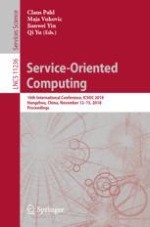This book constitutes the proceedings of the 16th International Conference on Service-Oriented Computing, ICSOC 2018, held in Hangzhou, China, in November 2018.
The 63 full papers presented together with 3 keynotes in this volume were carefully reviewed and selected from numerous submissions. The papers have been organized in the following topical sections: Microservices; Services and Processes; Service Trust and Security; Business Services and Processes; Edge + IoT Services; Social and Interactive Services; Recommendation; Service Analytics; Quality of Service; Service Engineering; Service Applications; Service Management.
